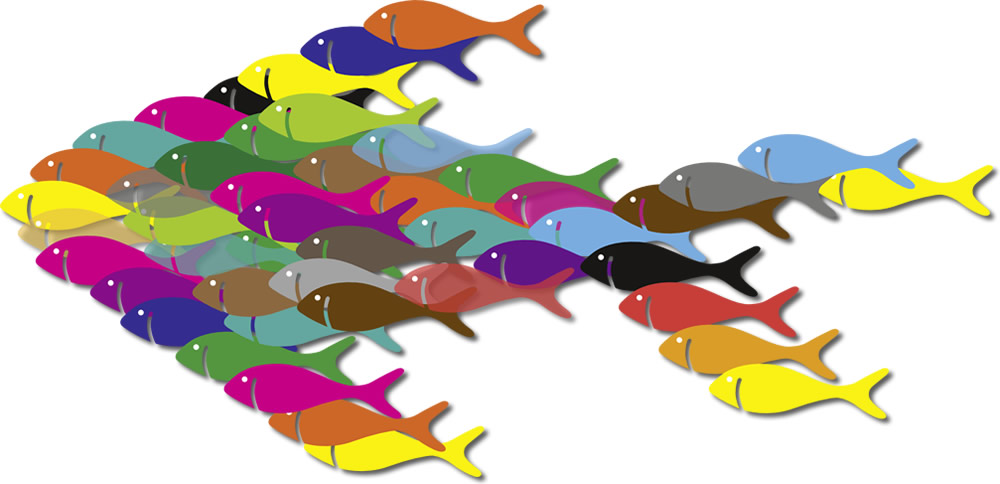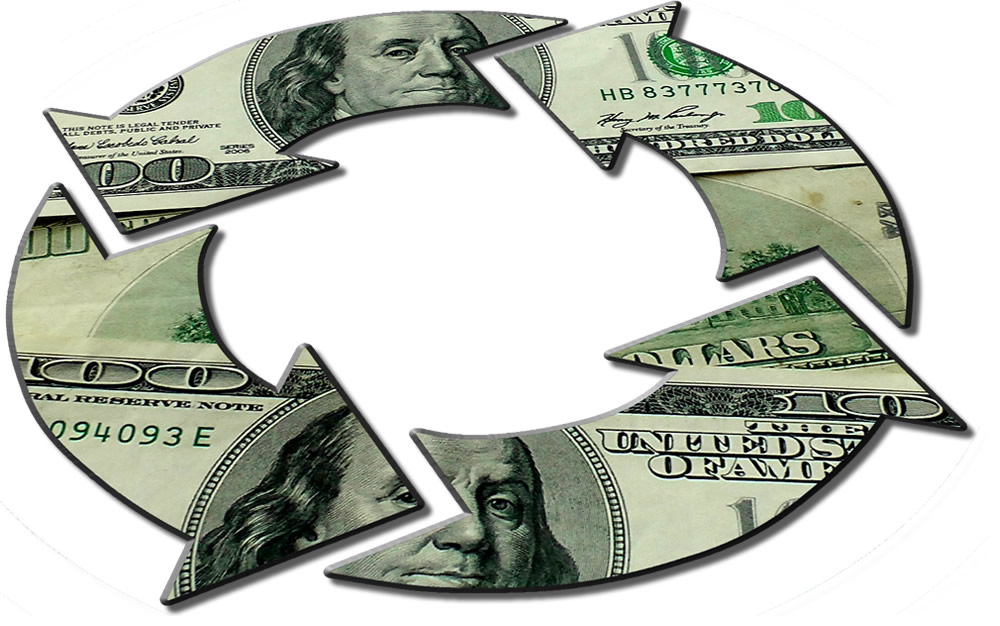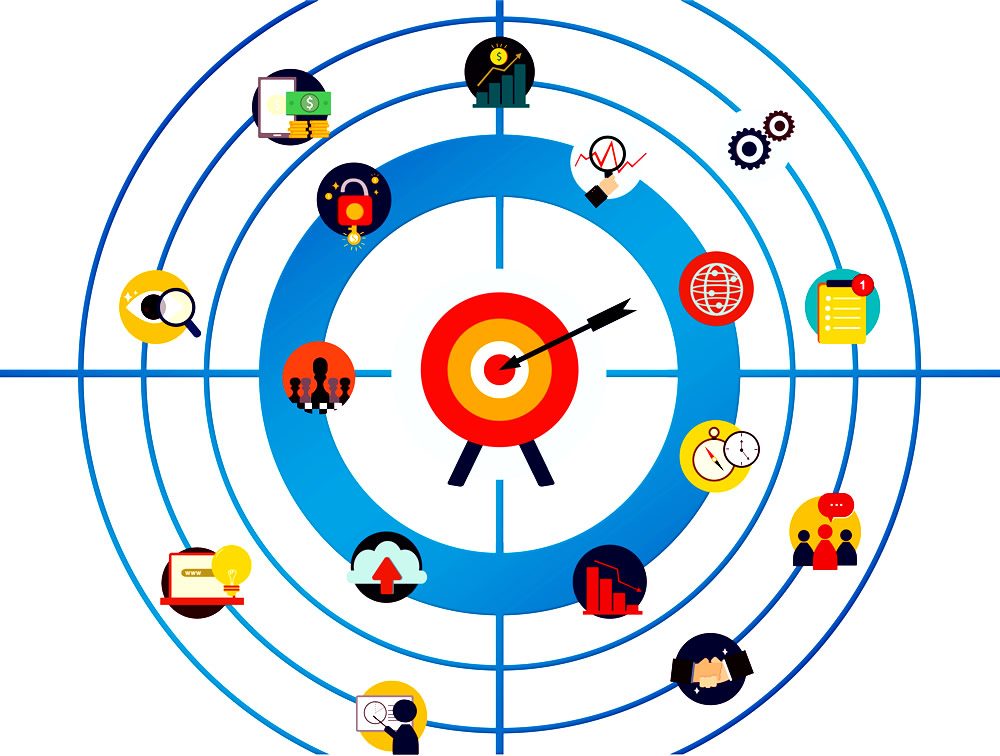Financial Publishing Industry Experts Share Informative FAQ Answers Before You Ask
- This is page 3 of a 5-part article. If you landed here first, you might want to start on page one.

Since our founding in 2004, we have worked with startup, small, medium, large and the "kings" of the financial publishing space (and even long before 2004 as key employees for some of the most successful FPs) bringing...
- new innovative ideas,
- infectious energy,
- well-refined experience and
- an attention to detail that is second to none.
...all qualities a startup FP needs much more than those already established.
That diversity of experience also keeps us sharp: we pick up "latest & greatest" and "what works now" insights that come from associating with the top brains in the business.
As THE best-of-our-kind, full-service agency for the FP industry, many would-be FP entrepreneurs have reached out to us looking for useful information to flesh out their ideas, develop or modernize their websites, new product dev, great marketing campaigns, squeeze more results out of their marketing and/or sales models and much more.
Aspiring FP entrepreneurs tend to ask a core group of questions. We've consolidated all of that great information into an eight-question FAQ. Click any question(s) of interest to reveal an answer. There is a great wealth of hard-earned insider details here. Enjoy...
INCUBATING FP ENTREPRENEUR'S EIGHT MOST FREQUENTLY ASKED QUESTIONS
*cheapest in this context is still doing everything RIGHT: using proven tactics & best practices, developing an impressive challenger to established FPs, no quality compromises, etc... creating potent, foundational assets for short & long-term success. Cheaper than this WOULD involve making tangible sacrifices, adding needless risk to your startup's potential. Per "do it right the FIRST time," the following is a "don't shoot yourself in the foot" solution without forfeiting proven, what-works-best elements of very successful FP businesses... exactly how OUR OWN experts would start creating a FP business today if money was tight.
A 2-STEP APPROACH TO BUILDING A "GET READY" FOUNDATION
For those situations where startup cash is scarce... or scared... a commonly-made mistake is to short-change your "get ready" assets. Some try to:
- do it all too cheaply... and it shows... turning off prospects & leads, putting unecessary-but-sizable burdens on all future marketing, etc.,
- do too much of it themselves without industry experience applying "what works" concepts & tactics... and filtering out perfectly logical guesses that always flop,
- build too much to personal taste, straying off of what the masses want to buy, etc.
Many make a very wrong assumption: imagining a successful FP is mostly about posting a good track record on a barebones website... then laying back waiting for a revenue tsunami. If it was THAT cheap & easy, EVERYBODY would be in the FP business!
Choosing to make those mistakes- and others (see question #4 below)- jacks up the risk of startup business failure. For the "I want to do it all right, but money is tight" entrepreneur, a smarter option is to split "get ready" (to go to market) into 2 separate steps...
Step 1 is focused on building up a quality following (your own house list of relevant leads), using some no-cost & low-cost tactics we can share, while establishing yourself as a knowledgable leader ready to help them. The common analogy is rock star and the industry often refers to the figurehead(s) as investing or trading guru.

Just about every rock star's story starts with almost no fans beyond some supportive family & friends. They typically have little-to-no marketing budget. So they do a variety of low-cost & no-cost things to grow exposure. Those effort-based tactics win them some fans. More work = more exposure = more fans. Even more work = even more exposure = even more fans. Etc. Etc.
As the fan base grows, the opportunity to monetize is growing with it. Eventually there is enough probable buyers to justify launching a product to sell. Introduce a product to a well-nurtured fan base and good initial sales are likely to result. This is a very good analogy for this 2-step approach.
Relative to the "get ready" foundational asset list, Step 1 delivers:
- #1 (experienced consulting)
- #4 (image/identity dev) in full plus
- most of #3 (quality FP website with all of the crucial, lead-capturing hooks).
You then use those assets plus time & specific efforts to grow a big following- your own 'groupies' if you will- bonding with them over time so they are well primed to buy something from you as soon as you offer them a compelling something: #2- the product.
Again, we can share what works best for industry FPs in terms of sourcing & growing loyal fans. You work hard at those tactics and watch your own lead database grow. We also share industry-proven ways to bond with your leads to grow trust & faith in you, motivating them to more readily open their wallets when you ask. When your fan base nears a good target quantity...
Step 2- GO (to market)- is mostly about monetizing:
- the product-selling parts of #3 (website),
- #6 (marketing plan) and
- #7 (marketing creative) in full.
This phase can be timed around how quickly your house list nears a certain size: a specific lead quantity threshold we can help you determine that best fits your shorter-term revenue and/or personal income goals. As the number of YOUR "fans" approaches that threshold, you'll have a solid base to which to introduce your product.
Nurtured house lists tend to convert (to paying subscribers) much, MUCH better than any other (external) prospect sources. They are the easiest, new money you can make in this business!
Obviously, the Step 1 function of doing specific things to grow your lead list is an important, forever task for an FP. It doesn't stop with that first monetization campaign. You keep doing it for the life of the business, forever striving to grow your house lead list larger & larger, perpetually nurturing that base and then monetizing it again & again. In simple terms, you repeatedly capitalize on a simple- but golden- migration...

"Get ready" assets #2 (first product to sell) and #5 (mobile app) can be included in either step- you tell us when you want those. If step 1, you simply leave #2 and its website parts hidden until you are ready to formally debut your product... which is typically when you are nearing that lead quantity threshold. Why would anyone want to build it and then keep it hidden? Sometimes:
- cash-pinched startup entrepreneurs want to seek financial backing. Their own investment in Steps 1 and 2 show potential backers that they've got tangible "skin in the game," greatly increasing their odds of actually winning some backing vs. pitching investors with only some ideas.
Being able to show WHAT they intend to sell in finalized form- obviously superior to competitor offerings already selling to thousands or tens of thousands of paying subscribers- is much more effective than leaving it all to backer imaginations. And putting a mature, product prototype in their hands is farrrrrrrrr better than only a business card.
Later, when they are evaluating ALL of the possible new businesses pitched to them, your spectacular product can remind them that yours is the ONE to back. They are already investors. Show them your better way to invest. - seeing a physical product boosts confidence about starting the business. When you can see and touch what was formally only some ideas, it all becomes very real... very tangible. Reality can put much wind in your sails.
- they want to show it to friends & family while they develop the rest of those fundamentals. Friends will ask. It's much better to show & tell than just tell. You might even win a few early subscribers by being able to present exactly what you intend to sell.
- etc.
At first, the optional #5 (mobile app) can be offered to the public in support of lead-building goals. There's tremendous opportunity for strong lead growth if even a tiny fraction of over 2 billion smart mobile device users choose to use your app. Do a little math right now. How many leads would you have if 1% of 2B became leads?

Let us help you innovate some strong, FP-business-proven, lead-attracting hooks in that app as part of "get ready." Later- when you are ready to monetize- the product-supporting features within a well-planned app can be activated at will, evolving your app from a pure lead-capturing focus to also being another, very popular way to fulfill your product. Then, keep it doing BOTH jobs for many years to come.
The main point of splitting "get ready" into 2 steps is that your house list can be leveraged to CREATE initial revenue. We focus on selling prepaid 12-to-24-month subscriptions to bring in LOTS of usable cash ASAP. Take some as income for yourself and invest the rest in marketing budget to fund subsequent subscriber acquisition campaigns.
HOW MUCH MONEY CAN BE CREATED THIS WAY?
Since it leans on something you can completely control- PATIENCE- you simply allow the passage of time to build up ANY quantity of house list leads. For example, let's assume 3 simple targets:
- a one million dollar revenue harvest from your launch campaign,
- $200 for initial revenue-per-subscriber and
- a 5000 person buyer pool in your accumulating house list.
None of those three are MIN or MAX variables or recommendations applicable to all scenarios. They simply give this dynamic calculator a start...
If you wanted to create- say- $500K for a marketing budget and also put $500K in your own pocket, 5K buyers at $200/yr does that. Want more? Wait a bit longer for the pool to grow... and then launch. Or roll out something appealing enough to average MORE than $200 per subscriber. Punch different numbers into that calculator to project other campaign #1 revenue scenarios. For example, what if you:
- wait for 10K buyers? Revenue doubles. Maybe choose to take a million and leave a million?
- target $500 instead of $200? Split the $2.5 million however you like.
- monetize ASAP? Reduce the buyer target: 2,500 creates $500K or 1000 yields $200K.
- bump the buyer quantity to 7,500 instead of 5K? You can take $500K for yourself while leaving $1M for a marketing budget... or vice versa.
- wait for 25K buyers and develop something(s) that will average $400 per subscriber? That's TEN MILLION DOLLARS to split however you like.
You can "what if" ANY scenario. Take ANY amount as income and leave the rest for marketing. Again, the key point here is that...
You CREATE cash to drive future growth vs. reaching in your own pocket for it... or trading away a sizable chunk of ownership to some cash-backing partner(s).
FP business marketing budget is like fuel for your car: the more you have, the faster you get to your ultimate (recurring revenue) destination. Use this well-proven approach to create as much as you want. Time is on your side here. Patience can pay well.
Building up an internal list and then launching your product to them can be a great way to go for startups and/or those who want the added confidence that comes by first establishing themselves with a large & loyal fan base. There's also some proven options for harvesting revenue after step 1 to help fund step 2. We can share those with you too.

The main downside to this option? Pace to monetization is slowed... because you are opting to take that time between steps 1 & 2 to build up a house list. If your goal is to make money ASAP, this is not the option for you. This is a better fit for the:
- "starving artist" entrepreneur who lacks the funds to fuel growth ("get ready" business development + marketing budget), and/or the
- entrepreneur burdened by some skepticism that this can actually be viable for them. Nothing addresses THAT fear better than unsolicited, spontaneous email & calls from leads encouraging you to build them something they can BUY. The positive pressure from would-be buyers is a MASSIVE confidence booster.
For many, the 2-step is a terrific option, as launching to a house list already bonded to you is a launch with well-proven likelihood of early revenue success. You can marginalize normal entrepreneurial fears by setting your launch quantity threshold high.
the bigger your nurtured fan base, the stronger the yield of your launch.
Set that threshold as high as you like... even higher than a probable minimum (to hit your initial revenue or income target) if you want to further pad your confidence. We'll help you figure out the RIGHT number.
If you happen to already have a modest-to-good-sized list of followers (friends, family, past clients, blog readers, etc.), you probably have a big head-start on the threshold target. Relevancy is key. For example, a huge list following you for cooking recipes or because of a hobby like parasailing or fly-fishing... or because you're in a group interested in a sports league, car restorations or similar may not be a very relevant list to investing/trading. The more relevant the list, the more likely the interest in paying for an FP-type product offering. If you already have any such list, great!!! If not, we can help you take advantage of proven tactics to build up one from scratch. The vast majority of FP startup entrepreneurs have no such starter list. Consider it a big bonus if you buck that norm. |
AN FP INCOME SHORTCUT: BUY AN EXISTING FP BUSINESS
From-scratch business development always takes time... especially if the work is done right... and well. A high-quality, "get ready" (to go to market) biz-dev project for a startup FP takes at least a few months even when money is no object and any quantity of industry talent can be assigned to it. "Why?" is answered in the "timetable" section on the next page. But what if you don't want to take that time to build a great FP from scratch?
A well-capitalized entrepreneur could potentially shortcut the pure startup and/or 2-Step approaches by acquiring an existing FP. Many FPs are owned and run by people into and beyond typical retirement age... or nearing those golden years. There's almost always some willing to cash out at any given time. Make a few of them an enticing offer... and one will probably sell you a live FP business already established.
Unlike the 2-step approach where work & time are utilized to grow an initial following, an entrepreneur able to acquire a fully-functioning FP can shortcut much of that process, immediately gaining control over:
- a house lead list (with many already bonded to that brand),
- an active base of paying subscribers,
- 1+ products already being sold/renewed,
- an established FP website,
- lead-drawing educational content already in place,
- etc.
Most simply: one day you are NOT in the FP business, the next day you are.

If you are interested in an acquisition, BI can help you take advantage of this fastest-to-market option. We can then evolve the acquired FP over time to better align with your own personality, trading style, product offering aspirations, etc.
The key point to acquiring an existing FP is pace to market: buying an already-bonded lead pool and an existing stream of subscription revenue. Instead of building something from scratch and then going to market in a number of months, you are already in the market upon the close of the acquisition. Revenue received AFTER the deal closes is YOUR revenue. Conceptually, you could close at- say- 2pm and have your first revenue at 2:01pm.
BI can expertly help you with the acquisition, a smart transition and business evolution plan to make it best reflect you as new owner. Our marketing enhancements are likely to help you more quickly recoup the purchase price vs. only doing more of whatever they have been doing.
The main downside to this option is that it can require a LOT of cash up front for the purchase. Many FP founders- even those well beyond retirement age- enjoy the consistent and relatively easy income that comes from owning an established subscription-based business... so they are rarely itching to sell.
Stirring such interest can involve making a generous offer they can't refuse, which can be much more expensive than building up your own FP and spending less than the same money marketing it into its own success.
You will also inherit any reputation associated with the acquired business- which can be positive or negative- and it may take some time to evolve it into something that better reflects your own personality and abilities... and evolve public perception of that brand if it is not already stellar.
All things considered: it is usually less expensive & better to create one from scratch (a clean slate) vs. acquire & evolve... but if you want to make money from a FP business ASAP and you have a good amount of cash or credit/backers available to purchase a business, this is the fastest way to FP monetization.
| If you have an abundance of cash/credit, another way to quickly grow an FP business is to regularly acquire other FPs... then cross-sell products from each to the others. Having a number of FPs under a single umbrella offers many new growth opportunities... and can be a kind of diversified portfolio for this type of business. Most of what makes FPs grow bigger than approx. $8M-$20M/yr comes from rolling out multi-guru product offerings. Instead of all home-grown, organic product development, another way to build up a stable of gurus is to acquire independent FPs. We can help you do this well. |
IF IT SOUNDS TOO GOOD TO BE TRUE...
Several long-established, large FPs are quick to pitch naive traders & analysts thinking about starting their own FP with the sugary, razzle-dazzle of "WE take all the risks: WE do all the marketing… WE build the website… WE sell the product... WE market it to our own gigantic lists…" etc. It is well-honed spin that- more often than not- easily seduces many would-be entrepreneurs because it seems to readily resolve normal, new business creation fears in very tangible ways. What's not to like?
As all "too good to be true" propositions always do, the polished pitch sounds very enticing. But consider THE most fundamental tenet of entrepreneurship...
He who takes the risks gets the rewards.
 And therein lies the terrible hook in all that delicious-sounding bait. The big FP "partner" will own every asset created for "your" business. They will own the products you might contribute, including the methodology(s) and/or algorithm(s) you've invented to underpin "your" product. They will own the list that becomes your followers, including all brand-new buyers not already in their own database (even your friends & family who opt to buy your new offering). They will market in your name without you having much say in the kinds of messaging they use... which means you sacrifice control of your own narrative, image, reputation and public perception. Then, they ride your reputation until they can no longer harvest enough new business out of it... at which time they fire you and roll on to the next "partner."
And therein lies the terrible hook in all that delicious-sounding bait. The big FP "partner" will own every asset created for "your" business. They will own the products you might contribute, including the methodology(s) and/or algorithm(s) you've invented to underpin "your" product. They will own the list that becomes your followers, including all brand-new buyers not already in their own database (even your friends & family who opt to buy your new offering). They will market in your name without you having much say in the kinds of messaging they use... which means you sacrifice control of your own narrative, image, reputation and public perception. Then, they ride your reputation until they can no longer harvest enough new business out of it... at which time they fire you and roll on to the next "partner."
This is a well-oiled machine for the bigger players: take full advantage of a new (often pristine reputation) "star" as much as they can... then dump them and hitch on to the next golden "partner." There's always another in this pipeline. If you do a little research, you can quickly discover the former "star" you are potentially replacing (or ask us to show you).
After you "depart," you find yourself right back to start... actually BEHIND the starting line... because now you're (non-compete) locked out of doing anything as an independent FP for what is usually 6-24 or more months... a very long time in which many followers can- and will- forget you. During all that time, your old employer is thoroughly bonding them with the new star(s), so odds of luring them back to you after the lockout ends is relatively poor. They automatically roll what was your followers into this new star's product for as little as free and/or outright replace you with this star in the product you were running (and may have brought to the "partnership" as an original creation).
After your long wait, you CAN launch your own FP... but you are probably NOT permitted to directly market that list. Why? THEY own that list, not you. If you are atypically allowed to pay your former "partner" a list rental fee for one (marketing) crack at that list, you'll be asking potential subscribers to choose to buy something from you vs. what they were given for free... and contend with the wonders & greatness spun on behalf of the new star who replaced you... AND to which many of your former followers have bonded over the long time you've been invisible & silent. This never works well... if at all. It's truly back to square one, now with the following key negative working against your new startup...
While you are with them, the typical FP will have made marketing claims in your name you will probably not like. Many choose to lean on extreme hype marketing messaging. This tends to be one of the biggest regrets in opting to go this way by those bringing a clean reputation to the "partnership."
The FP public will not recognize that hype as their messaging. Instead, the market assumes that is all YOU. If they harm your name & reputation with hype-a-rama beyond anything you would approve if you actually had a say, too bad. And once reputation damage is done, it's hard to rebuild when you try to start your own.
 That deal that sounded so great up front comes at a terrible & (often) lasting price... a frustrating sense of feeling used, abused and discarded... with little to show for all of your hard work after they fire you because THEY OWN EVERYTHING!
That deal that sounded so great up front comes at a terrible & (often) lasting price... a frustrating sense of feeling used, abused and discarded... with little to show for all of your hard work after they fire you because THEY OWN EVERYTHING!
We've seen this very scenario play out over and over with many FP "partnerships." Those on your end of the deal are never happy with the experience and ultimate outcome... often expressing great regret choosing to go that way instead of building their own FP business and fully controlling everything themselves. Learn from their collective, 20:20 hindsight. Don't be seduced into becoming another one of them. People much less skilled than you start new businesses every day. You can do it! We can help you do it right.
There are only 2 modest positives in industry-partnering options:
- you’ll get a smallish peek at how this kind of business functions. They will generally try to show you very little, but you should pick up something when you are in their offices... and second-hand via the kinds of marketing you see, how you are presented on a website, etc. (though you may not like the kinds of marketing they use... and probably won't want to do the same when you have your own FP business). Of course, we can teach you much more about HOW these businesses work if you want to go your own way now.
- If you actually want another salaried JOB instead of much more lucrative entrepreneurial profit & getting to be your own boss, that’s very much what the "partnering" proposition becomes: a JOB... albeit a temp job, as you are likely to be fired within a few years at most.
Other than those, the whole proposition is enormously favorable to the big "partner" in pretty much every way. It just doesn't SOUND so overwhelmingly against you when it's being pitched. It is a perfect example of "if something sounds too good to be true..."
 As valuable as now knowing these insider insights may seem, you can't do much with them towards trying to win a better deal. There’s PLENTY of fish in this sea: many more would-be traders/analysts ready to naively swim right into a big shark's mouth.
As valuable as now knowing these insider insights may seem, you can't do much with them towards trying to win a better deal. There’s PLENTY of fish in this sea: many more would-be traders/analysts ready to naively swim right into a big shark's mouth.
If you demand the above is addressed in any deal with you, there will be no deal with you. If you show that you won't permit them to do just about anything they want to do in your name, you are very likely to be fired BEFORE you are hired. Etc. The line behind you ready to be tricked into doing anything they want is a long, LONG line.
In short: they don’t need you as much as you may perceive you need them (had you not seen all this first). There’s always another new "partner" they can take on instead. The stream of people wanting ONLY a paycheck and/or would-be entrepreneurs too afraid to take entrepreneurial risk is endless.
| YOUR BEST MOVE | |
 |
REJECT THEM!Don't partner. Be your own boss. Own all of your own assets. Control & manage your own name & reputation instead of letting someone else damage it. Enjoy the much more lucrative money in profits vs. the hard-capped ceiling in paychecks. Tax systems all around the world tend to favor the business owner over individual employees. An owner can't get fired or laid off. An owner doesn't have all of their followers taken from them in a day. And on and on. Enrich yourself in all of the many benefits of being an actual entrepreneur! We can help you do that. Completely rule your own destiny. |
THE ENEMIES OF FP STARTUP SUCCESS
Much like investing, starting any kind of business has risk. All of the typical things that can go wrong for any type of business can go wrong in this one too. The below shares a few possibilities that are more specific to FP startups…
1. LAZINESS

Like caring for a newborn baby, any startup tends to require hard work. Come into this one with a leisurely or hobbyist work ethic and you’ll drive little upside. Entrepreneurship is NOT for the idle, lethargic or sloth. Deliver well for your customers and you keep them. (Choose to) Be too tired/inert/distracted to do much for them and they’ll move on to some other FP that will offer them more value for their money.
One exception: there is a kind of "nanny" for this baby if you want to hire talent for the trading/writing side too: skilled (what are called) ghost writers & analysts ready to help you. They do the bulk of that kind of work and you can take up to all of the credit... as if you did it all yourself. Like any business owner: if you have the money, you can hire staff to do the work FOR you instead of doing it yourself.
2. IMPATIENCE
A subscription model business is a "long play" business. The greatest bounty comes from subsequent transactions out beyond transaction #1: renewals, cross-sells & upsells. Consider the Sports Illustrated pitch to brand new subscribers...
...get 12 issues of SI, plus this commemorative <tangible gift>, plus this team sweater, plus this <other thing>, full access to SI online, the swimsuit edition and this <other thing>… all for only <surprisingly low price>. If you order right now, we'll throw in this <special bonus>... but only while supplies last. Act now!
Do you think SI makes ANY money on all that they deliver in THAT transaction #1? Probably not. They might even be losing a little money on some introductory offers. So why do they do it? Transaction #2 won't have to throw in so many extras to get the exact same revenue again. Nor will transaction #3, #4, #5, etc. They may be running a near break-even or limited-loss acquisition model to maximize initial conversions... then making their profit on whatever they can sell them in subsequent transactions.
This is a commonplace approach in subscription models. Many will tune their acquisition models to around break-even to maximize transaction #1 conversion volume. What may seem crazy at first glance is actually crazy like a fox when you think it all the way through. They are not selling only 1-year of SI. They are selling MANY years of SI. If they keep most of these subscribers for many years, they make a great deal of profit on them beginning with transaction #2.
A startup entrepreneur is often overly focused on how fast they make a large profit. A subscription model is more of a patience model. Much like investing (and a fundamental concept you'll want your own future subscribers to embrace)...
Passage of time plays a MAJOR role in the accumulation of wealth.
As odd as this may seem at first read: established FPs see making a large profit on transaction #1 as a NEGATIVE. WHAT??? Why? Because they know they sacrificed a number of additional buyers by charging too much to make that profit. The shrewd FP would much rather woo a higher volume of new paying subscribers for their (greater volume of) future revenue potential than make a large profit on the first transaction from a smaller group today.
Welcome to subscription model mentality. It’s not pure, "get rich quick" (unless marketing budget is sizable). Instead, it’s build up an annuity-like stream of renewal & cross-selling revenue, then enjoy lucrative profit in the longer run. Its maximum payoff is LATER, when you ride subsequent transactions for upwards of years without having much cost in getting those customers to pay you again... and again... and again. In subscription model lingo, this is "lifetime value:" how much you make on the entire relationship in total... which is much greater than how much you are able to tally in only transaction #1.
 A good exercise to fully grasp this topic is to look BACK at your FP from the future: mentally time travel out to when you've built up a base of- say- 50,000 paying subscribers by about the time you feel like retiring or semi-retiring. A potential simplification option at that point would be to tone down or even turn off all of the work in your new subscriber acquisition model. So you switch into mostly renewals-only marketing.
A good exercise to fully grasp this topic is to look BACK at your FP from the future: mentally time travel out to when you've built up a base of- say- 50,000 paying subscribers by about the time you feel like retiring or semi-retiring. A potential simplification option at that point would be to tone down or even turn off all of the work in your new subscriber acquisition model. So you switch into mostly renewals-only marketing.
Renewal revenue is often very-high-margin revenue. You basically ride into those golden years with relatively small marketing expense (sending renewal notices only) while bringing in that full renewal revenue year after year. Do good work and many subscribers may stick with you for 10+ years. THIS perspective- riding the renewal wave you've built up since starting the business- is ultra-profitable on relatively little marketing expense, time & energy.
Policies purchased this year might get renewed for 4, 8 or 12 years with a simple renewal (marketing) notice. Build up a big book and you can stop chasing new business altogether... riding that renewal wave for MANY years. Again, the big money is NOT in transaction #1 but in the long tail of (much more profitable) transactions BEYOND transaction #1.
Note that FP product pricing tends to be much higher than magazine pricing. So there is certainly room to make profit on transaction #1. The bigger point to the above is to recognize the impact of recurring revenue and how much MORE you make AFTER you've initially acquired each subscriber.
3. REACTIONARY EXPECTATIONS
An FP is a proactive growth business, meaning you can’t lay back waiting on an abundance of buyers to come to you. With a great website and/or app, there will be some who magically show up & buy, but the vast majority of growth is realized by proactively pursuing new business... through a select group of marketing tactics utilized by established FP successes.
If you are more of a reactive-minded entrepreneur, a better business might be to launch a local retail store, restaurant or franchise in a good location, where you can wait for nearly all customers to come to you. Highly profitable FPs are NOT that kind of business.
 One exception: if you consistently outperform the major indexes for a LONG time, there IS word-of-mouth (WOM) lifts. Happy subscribers will tell others about a good FP product(s). If, on average, 1 happy subscriber sells 1 new subscriber for you, simple WOM can double your subscriber base. Deliver well for subscribers so that many of them do that on a regular basis and your business can enjoy significant growth on WOM.
One exception: if you consistently outperform the major indexes for a LONG time, there IS word-of-mouth (WOM) lifts. Happy subscribers will tell others about a good FP product(s). If, on average, 1 happy subscriber sells 1 new subscriber for you, simple WOM can double your subscriber base. Deliver well for subscribers so that many of them do that on a regular basis and your business can enjoy significant growth on WOM.
4. LITTLE-TO-NO MARKETING
Successful FPs are marketing-driven businesses. Marketing directly influences how big and how fast this kind of business grows. In fact, marketing is MORE important to business growth than product and track record. It is the fundamental fuel of FP business growth.
What happens when you don’t put any fuel in your car? Regardless of:
- the quality of that car,
- how well it is engineered,
- how uniquely configured to perform at the highest level,
- how certain you are that it is the very best car in the world,
- etc...
...it won’t go without fuel. That analogy is a perfect one for an FP business.
On average, a well-established & well-refined FP spends about 25% of revenue on marketing. A startup trying to more rapidly become established might opt to push that up to 35%-40% or more for the first year or two.
This simple metric can be used for good "what-if" estimations assuming the business is well assembled:
Revenue target times marketing budget % = estimated marketing budget.
Or you can work the same math the other way…
Available cash for marketing times approx. 3 = good revenue estimate.
Those starting this kind of business with an expectation they will not do any marketing are more likely to have a slow-growth business at best. We know of:
- no-marketing (investment) FPs- several with outstanding track records- that have been at it for 10+ years... and the owner(s) is still trying to reach a point where they can pay themselves $100K/yr.
- big-marketing FPs- some with atrocious track records- that have quickly grown to millions in annual revenue... and thus very large incomes.
Note the key difference in those two examples.
Does this mean you MUST allocate a good chunk of revenue to marketing? No. Many FPs do not spend much- if anything- on marketing. The cost in that? Slow growth. Owners of such FPs are often going at it as a side gig, moonlighting or more like a hobby. There IS some revenue in no-marketing FPs. You just won't be swimming in profit that way.
Exactly like what you intend to package & sell to your future subscribers...
There are no gigantic, overnight riches to be realized from little-to-no investment.
To future subscribers wanting to invest very little cash in your FP product trades... with expectations of huge cash profit in only a few weeks or months, won't that concept be EXACTLY what you offer them? It apples to you- and this- too.
As it is for just about any kind of business, marketing "greases the wheels" of growth. Companies selling commodity items that everyone knows well- tires, beer, motor oil, hamburgers, soda, phones, shoes and even water- allocate sizable budgets to marketing. Why? Never because they want to waste that cash.
Companies market to meet/beat their revenue & profit objectives, which are often set much higher than can be achieved on purely organic growth driven by free/cheap tactics like WOM, SEO, publicity, social, networking and similar. Rather than waiting around for growth to magically occur, they leverage marketing as an accelerant. Good marketing directly supports the common want of "grow big & grow fast."

...thus the industry norm of spending about 25% or more on marketing for growth-focused FPs. Yes, there are a thousand marketing tactics you can try that cost nothing or nearly nothing... but FPs don't ignore or sparsely utilize (a few of) those because they want to waste 25%+. They spend that level of budget because a specific group of tactics are THE ones proven to work. If there was any dirt-cheap marketing tactic that yielded just as well, they would jump all over it... and this section of this page would encourage spending near nothing on marketing too.
Another view of the "25%-of-revenue" metric is that an established FP will spend about $1 to make about $4 in revenue. A startup might choose to embrace $1:$3 for a while to speed up their early momentum.
Many entrepreneurs without FP experience imagine that ratio more like $1:$100, $1:$1000 or even more. That kind of lottery-like, pie-in-the-sky is definitely NOT a valid assumption... for almost ANY kind of (legal) business.
Consider $1:$4 vs. the proposition you'll want your own subscribers to buy from you. Often a trader with a good system might be pitching $1:$1.10, $1.15 or maybe $1.20. The standard version spun by financial planners everywhere hovers between $1:$1.06 to $1:$1.08.
A few trading systems might spin up to $1:$1.30 or so, against which knowledgable traders who know how markets work would cast some doubt. Few-to-none would pitch $1:$4 as a realistic potential from stock or fund investments. Even the futures & options FPs rarely deliver $1:$4 on their longest, long-shot trades.
Now look through the L O N G E R lens: when one considers that THIS $1 is buying RECURRING revenue, it becomes even more attractive than many other kinds of businesses. That $4 may become $8, $12, $16, $20 or more via future renewals. Serve them well to KEEP them for many years and sweeten your own ratio.
5. LEGAL
Startup entrepreneurs without good insider knowledge or coaching can make fundamental legal mistakes that can cause them some trouble. For example, you should definitely choose a business structure that mitigates personal liability: usually an LLC or S-Corp if set up in America. We can help you make good decisions about all such setup basics.
A bigger, more FP-specific mistake to avoid is crossing this line...
A financial PUBLISHER is NOT a financial ADVISOR
An FP cannot offer personalized advice to individuals, manage money, steer subscribers to their family or friend's brokerage business and a whole host of other rules that cross the line from publisher into regulated territory. Your FP should not be able to be viewed as any kind of "front" (or client feeder) for ANY registered-side business.
 If you function only as a publisher, you do NOT fall under SEC, CFTC or similar jurisdiction. You don't have to be a RIA, CFA, CFP, CLU, ChFC, CMFC, LIFA, etc. You don't need a series 6, 7, 63 or similar licensing. There’s no SEC audits and similar. There's no regulatory compliance gatekeeper on staff to beat down everything you want to share with your followers. Etc. Your experiences- and FREEDOMS- as a publisher are farrrrrrrrr superior than those who live & work in regulatory-dominated roles.
If you function only as a publisher, you do NOT fall under SEC, CFTC or similar jurisdiction. You don't have to be a RIA, CFA, CFP, CLU, ChFC, CMFC, LIFA, etc. You don't need a series 6, 7, 63 or similar licensing. There’s no SEC audits and similar. There's no regulatory compliance gatekeeper on staff to beat down everything you want to share with your followers. Etc. Your experiences- and FREEDOMS- as a publisher are farrrrrrrrr superior than those who live & work in regulatory-dominated roles.
"Been there, done that" expertise like us KNOWS what can and can’t be done as publishers and can teach that to you. Legal worries are easily moderated IF the startup learns how to always be in publisher mode vs. slipping into advisor mode. There are tremendous benefits to being a publisher instead of an advisor. Ask us about them.
What if you are already some kind of registered-side professional and wish to persist that income too? No problem- just keep both businesses entirely separate... as if you've taken some fully-disconnected job at Starbucks or Target or Apple... or are opening a franchise like McDonalds or Dunkin Donuts. At one "job," you are an advisor. At the other, you are a publisher. There are plenty of FP "gurus" with a foot in BOTH worlds. If this topic is applicable to you, we can help you dive deep into it...
6. EXTENDED SLUMP/POOR PERFORMANCE
Contrary to what is often logically assumed, trading performance is NOT very important to woo new paying subscribers IF:
- the business is well-assembled and
- using proven marketing tactics.
Yes, industry marketing IS that good.
 However, long-term results that consistently disappoint will drive customers away. This is called the "leaky bucket" analogy: pour brand new customers into the top of the bucket while existing customers leak out of the bottom. One crucial growth task is minimizing those holes in your own bucket. Why is this crucial?
However, long-term results that consistently disappoint will drive customers away. This is called the "leaky bucket" analogy: pour brand new customers into the top of the bucket while existing customers leak out of the bottom. One crucial growth task is minimizing those holes in your own bucket. Why is this crucial?
As described earlier, the bulk of FP PROFIT upside is in transactions beyond transaction #1. Perform:
- well and you can cheaply harvest revenue from existing subscribers again and again.
- poorly and risk losing that future, very-profitable revenue.
The ideal FP owner is one who can take advantage of all of what works for even the terrible-at-trading FPs: pouring in LOTS of brand new subscribers… BUT then KEEP them for a long time by delivering at or beyond their expectations. A good way to do that is by focusing marketing experts on the marketing and trading experts on the trading. Maximize both and the sky is your limit.
7. TOO MUCH DIY MENTALITY
Many entrepreneurs wanting to start an FP business try to do EVERYTHING themselves. Some want to build the entire business on their own… do all of the trading, all of the marketing, all of the service, sales, product development, website management, design, etc. Sometimes this:
- is an ego(mania) thing.
- shows some level of disrespect for (or ignorance of) the contributions of other professional disciplines.
- reflects so much focus on minimizing cost that they will shoot themselves in the foot/feet/entire legs vs. getting the things where they lack (much) expertise... done (very) right by professionals skilled at those things.
Nobody is so good that they can wear ALL of the hats in ANY thriving business. Delegate and/or outsource!
When the DIY entrepreneur develops the business in a vacuum, they often build it for the one "customer" they know well: themselves… which often yields a business catered to a market size of as little as one: (again) themselves.
The FP market tends to NOT be very similar to entrepreneurs who create an FP business.
So the moment they run with this assumption- which is often THE very first & dominant-in-all-things assumption they make- they veer off target. As development progresses, more and more decisions are made on that very wrong foundation, taking all next steps and next, next steps and next-next-next, etc. further & further off target.
 Without:
Without:
- long-term experience within existing FP businesses,
- thorough customer research AND
- diverse competitive analysis insights…
…the odds in a disconnected, DIY entrepreneur magically guessing it all pretty right are astronomically against them. Build an off-target business and customers won’t find the missed target as compelling as many established FPs who have already figured much of this out. Guessing at marketing tactics will probably just waste money- perhaps a LOT of it- on those guesses. Develop a product that you’d want to buy if you were your customer... and you might launch a product that only appeals to ONE customer: you. Etc.
DON'T MAKE THAT VERY COMMON MISTAKE!
Apply the much smarter choice right up front to hire the best talent to cover the parts of developing and growing your business outside of your core expertise.
If you are great at trading, FOCUS ON TRADING… delegating the rest to talent that is comparably great at their parts.
BI has deep & diverse experience with the non-trading/analysis aspects of an FP business, so we ARE very smart professionals ready to help you. Another way to go if you want to have permanent staff is hiring industry-experienced employees to do such work.
Building an inside or outsourced TEAM of professionals as skilled at their specialities as you are at yours is a long-term, well-proven recipe for great success.
| THE ALL-DIY GRAVEYARD | |
 |
The Internet is littered with countless new business startup corpses because the entrepreneur tried to do EVERYTHING themselves. Best we know, there is not a single, modern success story resulting from a pure DIY play. All better-than-hobbyist FPs (including many one-man and one-woman shops) lean on talented internal or outsourced expertise to contribute their respective excellence. You should too. |
HIRE US TO HELP YOU BUILD AN IMPRESSIVE FP BUSINESS!
Often we are asked about how we are compensated. This is summarized on the compensation options page along with a good description of how we work with clients. For "get ready" projects (before subscriber revenue can be realized), we are usually engaged per the #1 (project fee) or #3 (retainer) options described there. For "go" (to market) engagements, our clients usually desire #3 or #4 (smaller retainer + commission).
2 other commonly-asked topics:
- we cannot partner with clients, as becoming owners of any FP would alienate the rest of our FP client base. We would become a competitor instead of an objective service agency. We do welcome "pay-for-performance" opportunities and can take some compensation on a commission basis, but that's about as close as we get to what is often thought of as partnering.
- we are paid only in tangible currency (valid check, cash or bank wire)... not stock or stock options, the many variations of "future potential," live farm animals, a handful of magic beans, this year's time share week, deed to the Brooklyn Bridge or Eiffel Tower, original artwork, the super-secret family cookie recipe, Aunt Meg's favorite vase, etc. 😉
| AN EASY OPM OPTION | |
 |
One simple way to "create" up to all of the money to cover startup costs or more (even make money) is through our generous business referral program. In a nutshell, we're happy to discreetly pay 15% of first-year revenue collected from any brand new client(s) you refer. Alternatively, we could credit that 15% to your account, reducing your cash fee to us, washing it entirely or, if your referral(s) is large enough, the delightful scenario of having us pay you while we work for you. |
If you know some business decision-makers that need our kind of help (which is not limited to only FP-type businesses- our talents apply to ANY kind of business wanting to grow), refer us and potentially create some- or all- of what you need to engage our team to help your business thrive.
CORE COMPETENCIES: WHAT BI CAN DO FOR CLIENTS
- up to all of your B2C or B2B marketing & digital marketing: creative dev, campaign management & execution, etc (everything... much like a complete marketing department in outsourced form).
- up to all of your sales & support: telesales agents to cover live customer service and/or proactive outbound telemarketing to boost sales conversions. Insider tip: telesales support can add 3X to 6X or greater sales results vs. leaning on marketing alone.
- up to all of the web & tech-related work: develop websites or marketing sections of websites, review any website you may have started or built and layer in the needed elements you may have missed that are important to growing a customer base, SEO, PPC, all Internet advertising, marketing, etc.
- up to all of the product development and/or packaging of your capabilities in forms and volumes best matched to the targeted audience. Would-be entrepreneurs usually get this very wrong when they try DIY, often going way overboard on how much work to which they commit themselves, assigning great importance to the unimportant or making poor pricing decisions, etc. We can help you package your capabilities right... in a "how they most want it" beautiful form AND buyer-pleasing function.
- up to all strategic consulting: how best to fulfill your deliverables, how best to grow your business, how to put the right mix of elements in place to maximize every marketing dollar you spend, etc.

All of these skills are honed in long-term exposure to a wide variety of subscription & membership models: innovation, application, development, refinement, lead conversion, nurturing models, renewal programs, etc. We are positioned to cover up to ALL of the customer touch-points: marketing, sales, development and strategic planning & execution. We typically offer great cost savings vs. hiring dedicated industry employees with similar skillsets, yet deliver far superior work for the money... driven by decades of industry experience working with very successful companies.
WE ARE NOT YOUR COMPETITION!
Instead, we serve companies as outsourced marketing, sales, development, etc departments or strategic business advisors... much like engaging a traditional ad agency (though we are much more than only an ad agency).
We can feel like employees without the ongoing fixed cost, benefits and infrastructural demands of employees, including making in-person or virtual meetings, handling employee-like responsibilities typical of a marketing, sales, programming, management team(s), etc. Try us and see for yourself. We make it easy to try.
 We've helped relatively simple FP businesses grow to more than $75,000,000 in annual subscriber revenue. Some tables on the last page of this article offer good, "at-a-glance" summaries of subscribers, subscriber revenue and (your) income potentials as owner.
We've helped relatively simple FP businesses grow to more than $75,000,000 in annual subscriber revenue. Some tables on the last page of this article offer good, "at-a-glance" summaries of subscribers, subscriber revenue and (your) income potentials as owner.
ALL of those are realistic possibilities for a well-assembled FP business. Below, see revenue potential samples for a Small, Medium and Large FP at various ARPS (Annual Revenue-Per-Subscriber) levels...
| FINANCIAL PUBLISHING REVENUE | ||||||
| SUBSCRIBER QUANTITY | $150 ARPS | $250 ARPS | $350 ARPS | $450 ARPS | $550 ARPS | $1,000 ARPS |
|---|---|---|---|---|---|---|
| SMALL 5K | $750K | $1.2M | $1.7M | $2.2M | $2.7M | $5M |
| MEDIUM 50K | $7.5M | $12.5M | $17.5M | $22.5M | $27.5M | $50M |
| LARGE 100K | $15M | $25M | $35M | $45M | $55M | $100M |
So, for example, you will likely take first aim at a "small" FP subscriber count of 5,000 (row 1 in the table). If you can offer something(s) that will motivate your subscriber base to give you- say- $350 each year, 5,000 subscribers times $350 is a $1,700,000/yr business.
You can also do the math backwards. To answer a question like: "How many subscribers do I need if I want to make $3,000,000 per year?" the answer is $3M/ARPS = target subscriber count. For example: $3M divided by- say- a $450 ARPS = only 6,667 subscribers.
One more? "What if I grow my base to 25,000 subscribers with an ARPS in the $300-$500 range?" 25K subscribers times $300 = $7.5M/yr. 25K times $500 = $12.5M/yr. So...
25K subscribers giving you $300-$500 each year is a $7.5M to $12.5M/yr business.
QUESTION: Is a number like 25K a big number of subscribers?
No, it's towards about the middle of what is considered a medium-sized FP. Even very niche FPs can grow much larger than 25K paying subscribers. There's PLENTY of them!
QUESTION: Is ARPS at $300-$500 each year hard to get out of individual investors?
No, most of the smarter FPs will have their own ARPS optimized in at least that range if not above it. You might think of that range as "NORMAL" in well-assembled, well-run FPs.
INVESTORS ARE EVERYWHERE!
BOTH hemispheres • ALL Continents • EVERY Country!

Here's a map showing exactly which COUNTRIES have FP product subscribers...

Yes, that's ALL of them, including many ships at sea, buyers mid-flight and sometimes a few orders come from the very top and bottom of the planet too.
Expert BI marketers are hard at work trying to get one of the Mars rovers to be the first off-world FP product buyer. Then, watch out Mr. Spock... the billions on Vulcan are next. Their highly logical minds should appreciate the mental challenge of trying to reconcile the emotional & illogical madness of Terran financial markets. We anticipate the movie will be called: "Star Trek: The Wrath of Kahmmerce." 😉
You can market FP prospects in practically every distinct medium. The entire pie (or universe) is watching, listening, reading, attending, etc. all sources of information & education to try to improve their own results.
Everyone wants to make MORE money!
Turn them on to YOUR proposition by being anywhere & everywhere they frequent.
The FP industry offers direct marketing access to
predisposed to spending money on subscription products.
These people buy products like investor newsletters, email alert services, investor education services, etc. Most of them are currently subscribing to these kinds of products right now and are thus proven to be (recently) interested enough in such properly-packaged information to pay for it.
 Unlike much bigger numbers such as all investors in the world, this is a "cut-to-the-chase" group: those proven to BUY FP-type products... an ideal, niche slice out of a much bigger pie. In marketing, this is known as narrowing in on an ideal target niche... often called "low-hanging fruit." It focuses marketing budget on the select kind of investors most likely to actually buy what you want to sell... because they are already proven to pay for comparable offerings. They should be your first targets beyond your own house list.
Unlike much bigger numbers such as all investors in the world, this is a "cut-to-the-chase" group: those proven to BUY FP-type products... an ideal, niche slice out of a much bigger pie. In marketing, this is known as narrowing in on an ideal target niche... often called "low-hanging fruit." It focuses marketing budget on the select kind of investors most likely to actually buy what you want to sell... because they are already proven to pay for comparable offerings. They should be your first targets beyond your own house list.
There are specific ways to cost-efficiently get your own proposition in front of this receptive, cream-of-the-crop segment of prospects... and we are expert at those tactics. Use our help to cut to this chase.
APPROXIMATELY
Conceptually, the population of Earth best estimated above is the maximum potential, shaving some percentage off for those too young to care much about investing (yet!), etc.
In this type of business, it's almost always a 'more the merrier,' volume-play proposition. Every new subscriber you add comes with a "long tail" of all of the future revenue they will give you when they renew and/or buy other things from you. This "lifetime value" tally can add up to a big number if you serve them well to keep them renewing for the long-term.
One of the great advantages of an FP business is that the very same work, time & cost to produce a single newsletter can be distributed to 10,000 or 100,000 subscribers about as easily as it is distributed to 100. Costs to serve 2 is not double the cost to serve 1. Cost to serve 10,000 is not 10X what it costs to serve 1,000. Scale is very much the FPs friend.
Cost to serve 10,000 is not 10X what it costs to serve 1,000. Scale is very much the FPs friend.
The internet makes up to all investors anywhere in the world a potential subscriber to your business. A great website and simple email communications make it very cheap & efficient to sell and directly interact with them: no warehousing or shipping issues, no need for global office/retail locations, no postage, no packaging, etc. It's fully a "bypass-the-middlemen" business in which the creator of the product can directly sell & deliver it to the (end) buyer. Instead of a bunch of middle-men links in a chain needing to take a chunk of each transaction, ALL of the revenue can flow directly to you.
In North America alone, there's well over 100 MILLION accessible, individual investor prospects. Carve out- say- half of 1% of them to subscribe to your product and you would have 500K paying subscribers. Move a tenth of 1% to subscribe and you would have 100K paying subscribers.
100K-500K times average annual revenue-per-subscriber = $WOW
Many small FPs are quite happy with less market share than even a tenth of 1%. For example, if your own annual revenue-per-subscriber reaches- say- $400 (well below what is possible for good FPs):
- 50K subscribers = approx. $20M/yr
- 25K subscribers = approx. $10M/yr
- 10K subscribers = approx. $4M/yr
- only 5K subscribers = approx. $2M/yr
Are there FPs with 5K-50K subscribers? Certainly! Many-to-most of the established names you may already know should be well north of 5K subscribers. 5K subscribers is a relatively small FP. There's plenty with MORE than 5K paying subscribers.
Many FP startup entrepreneurs underestimate subscriber quantity potential, imagining their MAX as low as only dozens or hundreds of subscribers. Now you know better. Unless your model or system can only cater to a very small number for some reason (like extraordinarily thin liquidity when all subscribers take action at the same time), any what-if forecasting you do should be aiming to grow to- AT LEAST- many thousands of subscribers.
Longer term, there are no obstacles to growing into the tens of thousands of subscribers  with good work and good marketing. Again, scale is an FPs friend. Scale UP! Wayyyyyyyyyyyy UP!
with good work and good marketing. Again, scale is an FPs friend. Scale UP! Wayyyyyyyyyyyy UP!
A specific answer to this question for YOUR own FP will vary, depending on factors such as marketing investment and how well you allow an experienced team like ours to assist in business development.
At our best, we've helped a FP business bring in more than 2,500 new paying subscribers EACH MONTH. We have led the growth of a single investor newsletter to having more than 110,000 actively paying subscribers for better than $75,000,000 in annual revenue.
There is plenty of opportunity to grow a lucrative base of subscribers if you have something(s) good-to-great to sell through your own FP business and it is all packaged well, as desired by BUYERS of these kinds of products. Market research already in hand clearly defines FP customer desires. And our very-experienced talent can help you every step of the way.
Congratulations! You are more than halfway through this information... over the introductory hump and rolling downhill. The final two pages pull back the curtain on mostly the quantitative aspects of the business:
- The "get ready" (to go to market) development timetable,
- What it takes to get started well,
- Break-even considerations, best legal structure, etc,
- More about how much income you can make with your own FP business,
- More about how much revenue can be made in a well-assembled FP,
- How to visualize your potential through a subscription model lens,
...and much more. You've learned so much already and there's even more ahead...

